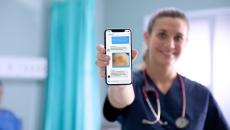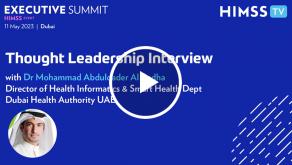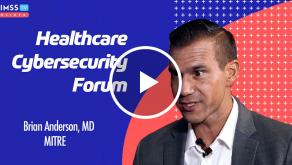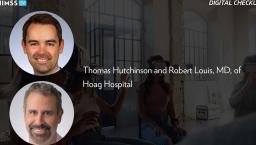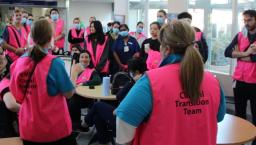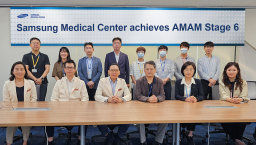How intelligent automation can help address healthcare's data problem

Photo: sanjeri/Getty Images
In healthcare, data is a primary driver of decisions. Collecting more data generates more information and knowledge, thus enabling better judgment and outcomes. Healthcare data comes from:
- Electronic health records (EHRs)
- Administrative and operational systems
- Patient registries
- Claims and pharmacy databases
- Research literature
- Public health and patient surveys
The gold standard for diagnosis and treatment is whether an intervention has been validated by clinical trials and approved by professional peer review and regulators. This standard has stood healthcare in good stead, but, as a result, it takes practitioners about 17 years to adopt a new practice – even after research studies have proven it to be effective and preferred.
Unfortunately, in the last few decades, this traditional knowledge implementation model has shown its age. Here are three examples of significant data-related challenges facing healthcare providers, along with some ideas on the role of intelligent automation.
Data volume and velocity
Medical research literature has grown exponentially in the last 100 years. In 1950, medical knowledge was on pace to double every 50 years. In 2020, the doubling time for medical knowledge fell to a mere 73 days. A medical student graduating in 2020 went through four doublings of knowledge during their studies, and what they learned represents only 6% of all medical knowledge.
Researchers looked at what it would take a primary care physician to keep up to date with relevant literature.1 They estimated this effort would require 627.5 hours per month (29 hours per weekday) or 3.6 FTEs of physician time. In other words, it is impossible for a physician to digest all relevant literature in their field.
So, what does a physician really need to know? In the past, a medical student had to memorize the names of 206 bones, 700 muscles, 78 organs, 30,000 diseases, 20,000 drugs and much more. In contrast, when quizzed on rounds today, students can find the exact, correct answers within seconds on their smartphones. Beyond the core knowledge all physicians should know, medical education has had to pivot from memorization (what) to methodology (how).
What can physicians do about all the research literature they have not read? In the past, journals published digests and meta-analyses based on editorial judgment. This was useful, but will eventually fall short given the growing enormity of the task. Can intelligent automation help?
Finding relevant information quickly can be automated using simplified guided interfaces in which a digital assistant can identify, search and curate findings from multiple sources to extract the desired data.2
Several research groups are also exploring the accuracy and reliability of automated text summarization approaches to biomedical research literature. Inclusion/exclusion criteria for article relevance have been developed based on combinations of natural language processing, machine learning and statistical methods. These systems have generally achieved good performance and will probably improve over time. Interestingly, some researchers and startups are now using similar AI-powered approaches to analyze patient information stored in EHRs for the purpose of reviewing quality, safety, compliance and operational effectiveness.
Data diversity
Outcomes and costs are often influenced by nonmedical factors. Changes in regulation, payer requirements and business models often affect the choice of therapy and medical outcomes.
Researchers have identified multiple real-world factors as social determinants of health (SDOH). Socioeconomic factors contribute 40% to an individual’s health status; health behaviors contribute 30%; the individual’s physical environment contributes 10%. It turns out that healthcare services account for just 20% of one’s health status.
If health status is impacted by many nonmedical factors, a future medical practice must consider a whole host of nontraditional data points such as education, access to care, social isolation, income level and food insecurity to provide optimal care.
Where automation will likely play an early role is to systematize the collection of disparate SDOH data from multiple sources and to cleanse, curate and store this data for later analysis and research. Per predefined rules, flags can be raised by combinations of factors that indicate elevated risk or predict poor outcomes.
Data as evidence
As the volume, velocity and heterogeneity of data expand, clinical guidelines based on the traditional gold-standard approaches cannot keep pace. Clinical trials are costly, take months to years and, when published, may be obsolete due to new technologies. Additionally, recent regulation has mandated the use of real-world evidence in drug development. Real-world data must be analyzed by observational statistical methods in which the selection and assignment of subjects is not under the control of the researcher.
Where can automation help?3 Observational studies can cover large patient populations from whom data need to be collected, verified, processed and analyzed in a secure and compliant manner. These steps are often manual, repetitive and error-prone. Automation can speed data gathering while reducing errors. Rules can be applied during data processing to flag exceptions and other phenomena of interest, and real-time dashboards can keep investigators apprised of study status. Automation could also assist in patient recruiting for identification, onboarding, monitoring and alerting.
Healthcare’s challenges with data encompass more issues than just these three highlighted above, but this brief discussion hints at the scope of work needed to move medicine into a future data-driven world where data from many sources can be quickly cleansed, curated and used to improve health outcomes for individuals and populations alike.
References
- Alper, B.S., Hand, J.A., Elliott, S. G., et al. October 2004. How much effort is needed to keep up with the literature relevant for primary care? J Med Libr Assoc. 92(4):429-37. PMID: 15494758; PMCID: PMC521514.
- Automation Anywhere. “Automation Anywhere Robotic Interface (AARI).”
- Automation Anywhere. “RPA for Healthcare.”









